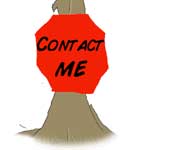|

Question:† How do I start a story?
Well, I always start a story with an idea or inspiration;
I get my inspiration from objects, people, and conversations. With this
inspiration I start to form a main character in my mind.
Characters/Protagonist:† Now has anybody here made anything out of
clay? Well, when you make this main character for a story itís like making a
clay figure in your mind. Your character can be funny, sad, anxious, daring, or
who or whatever you would like him to be.
Setting:† Later when I have finished making this
character, I ask myself, where will the story take place? This land and time that
your character lives in is called a setting. Now my character doesnít have to
stay in one place or even this time; he can jump about so that my story can be
spread out and be more interesting.
Antagonist: Once I have finished creating my setting I
need an antagonist, an antagonist is something that gets in the way of my main
character; choices for antagonist are persons or forces like fate, nature,
self, or society. In my story, Old King Stinky Toes, the antagonists are: Old
King Stinky Toeís smelly feet, and the Bumbling Dragon. Next I think about the
story in which the main character and the antagonist collide, and then I start writing.
Here is how most stories are written, itís called the Plot:
Introduction:† For me
itís like a being a jewelry shop owner. I like to start a story by putting a
diamond in the window, not a rock! In other words, I put in an interesting eye
catching phrase that fits the story, and I just begin. It is always better for
me to just start writing than to worry about the first sentence. Once I get to
know my characters better I can always go back and
change the beginning later. The beginning of the story introduces the
characters and setting; and introduces the conflict for which the
action of the story will take place.
Rising Action: Rising action is that series of events that lead
to the climax of the story, usually the conflicts or struggles of the
protagonist.
Climax: The most exciting part of the story is where the
conflict is resolved.
Falling Action: The aftermath of the climax, where the remainder of the
story falls into place, and the reader's questions are answered.
Resolution:† -- Conflicts are resolved by creating normality
for the characters and a sense of catharsis, or
release of tension and anxiety for the reader. The end; all the
loose ends are tied up.
Now, I donít always follow
this pattern for writing a story, but most good stories do follow it, and when
I go back and read or edit my story I make sure I can see all the parts as I
described.
Baxter
|






